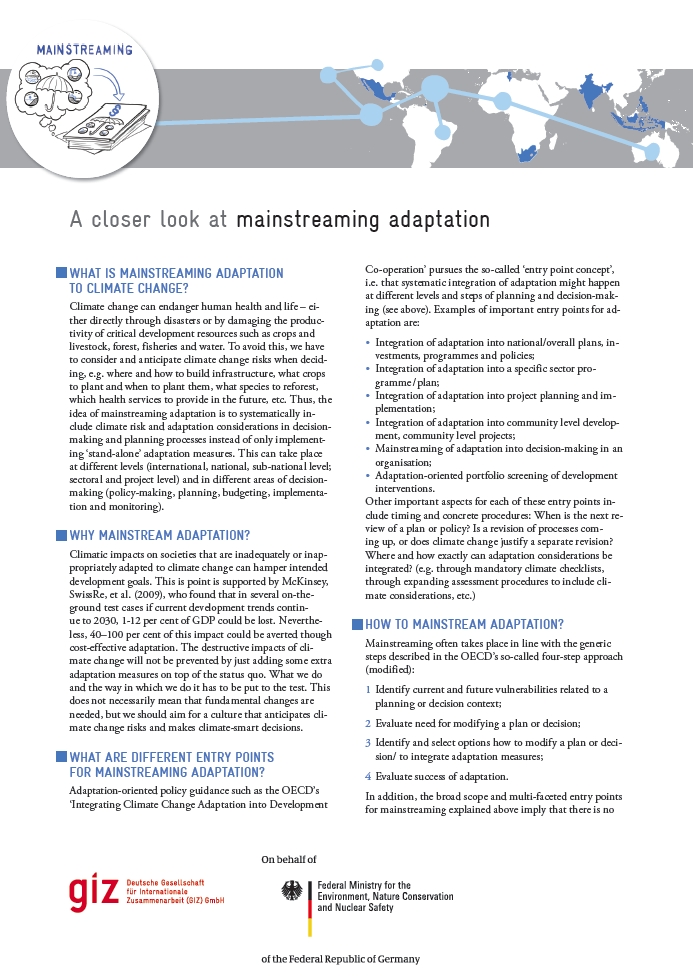A closer look at mainstreaming adaptation
What is mainstreaming adaptation to climate change?
Climate change can endanger human health and life – either directly through disasters or by damaging the productivity of critical development resources such as crops and livestock, forest, fisheries, and water. To avoid this, we have to consider and anticipate climate change risks when deciding, e.g. where and how to build infrastructure, what crops to plant and when to plant them, what species to reforest, which health services to provide in the future, etc. Thus, the idea of mainstreaming adaptation is to systematically include climate risk and adaptation considerations in decisionmaking and planning processes instead of only implementing ‘stand-alone’ adaptation measures. This can take place at different levels (international, national, sub-national level; sectoral and project level) and in different areas of decisionmaking (policy-making, planning, budgeting, implementation, and monitoring).
Why mainstream adaptation?
Climatic impacts on societies that are inadequately or inappropriately adapted to climate change can hamper intended development goals. This is point is supported by McKinsey, SwissRe, et al. (2009), who found that in several on-the-ground test cases if current development trends continue to 2030, 1-12 percent of GDP could be lost. Nevertheless, 40–100 percent of this impact could be averted through cost-effective adaptation. The destructive impacts of climate change will not be prevented by just adding some extra adaptation measures on top of the status quo. What we do and the way in which we do it has to be put to the test. This does not necessarily mean that fundamental changes are needed, but we should aim for a culture that anticipates climate change risks and makes climate-smart decisions.














